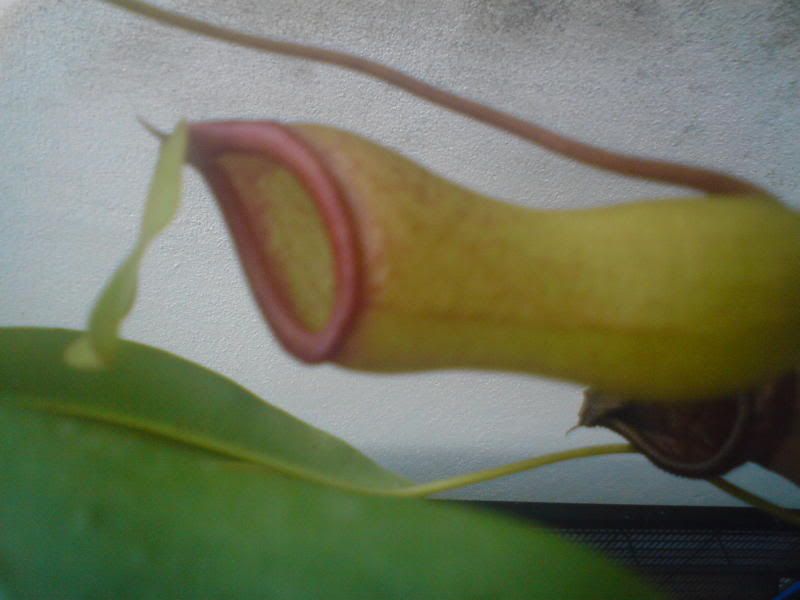
 |
|
|||||||
| Nepenthes Everything about Tropical Pitcher Plants |
 |
|
|
Thread Tools | Search this Thread | Display Modes |
|
|
|
#1
|
|||
|
|||
|
hey guys.. just wanna share some pic. its taken with my phone once again.. lazy to focus my bigger cam lah..
okay.. anyway, got this vent from YG.. love it but the colour of new pitcher deviated a bit from the original pitchers.. this pitcher was produced here in my home..  this one is half dried.. about 6 inches. used to have really really deep red lips.. 
|
|
#2
|
||||
|
||||
|
What media did you use? The vent looks a little dry, or is it the camera effects?
Its a nice plant judging from the pitcher, maybe a full plant view will suffice.  Cheers
__________________
Once bitten, twice shy. Learn to respect and love your CPs before your desire blinds your mind. Check out my Grow-list and my Twitter page! |
|
#3
|
|||
|
|||
|
Quote:
its getting used to the light exposure.. the sphagnum moss is very moist. well, moist enough at the least.. |
|
#4
|
||||
|
||||
|
Hi Malowie
Wow nice to hear you've got a N ventricosa too hahah......how does it pitcher for you does each of them decrease in size everytime it produces a new one???Even if its just a little??Mine is exactly like yours but when i bought it,it has some niced some pitcher with some red and some purple peristrome. Ken |
|
#5
|
|||
|
|||
|
Quote:
well pitchering for my case, the very first time it pitchered in my house... the pitcher was teeny. then it size of pitcher eventually grew bigger. the pitchers that are exposed more to sunlight are bigger.. haha hey post ur pic ken! i wanna see! i got my ventric from MAHA.. thought it was a hybrid or something until i read about it haha! it caught my eye because of the outstanding pitcher shape and lip... =) |
|
#6
|
||||
|
||||
|
Most "N. ventricosa" plants in cultivation are actually a hybrid population, involving N. alata, and possibly another species. They are very complex back-crosses, with some plants resembling the traits of one species or another. It seems to be a lowland plant as well, growing best in warmer conditions and not being able to withstand a mild frost. Generally, they have spathulate leaves less than 6 inches in length, which are relatively soft. The plants can be terrestrial, or nearly so.
The true species, N. ventricosa is at least twice the size of these other plants, and has long firm lanceolate leaves, well over 8 inches in length, also very stiff, with large pitchers about a foot long, and extremely ventricose, and nearly woody, like N. lowii. According to John Turnbull, it was found growing very high up in some trees, a true epiphyte, and the biggest Nepenthes in Luzon, which grows best in cooler conditions, and is very slow, and does poorly in warm, lowland conditions. The peristome is also unique, and doesn't ride up under the lid.  When it rests, the peristome is nearly parallel to the ground from back to front, with seveal "points" from the wide peristome. I know of only one clone in cultivation, which goes by the name "porcelain" form, perhaps the form known as "alba" may be the same thing, not sure yet. - Rich |
 |
| Currently Active Users Viewing This Thread: 1 (0 members and 1 guests) | |
| Thread Tools | Search this Thread |
| Display Modes | |
|
|